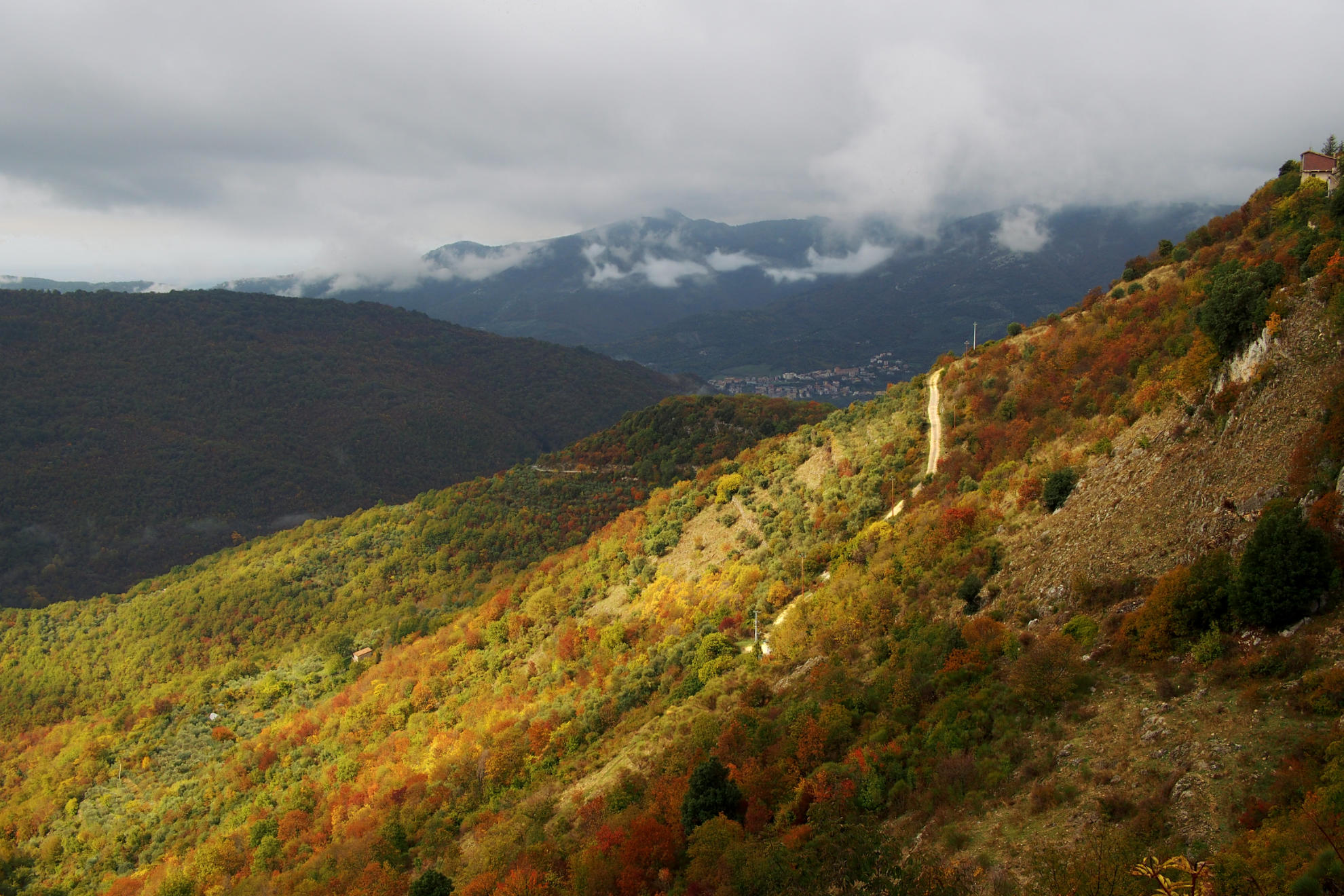Not even the melancholy barking of a Spinone in search of its owner can break the dense and muffled, almost unreal silence that surrounds the path leading from Saracinesco to Monte Costasole, the highest peak of the Ruffi Mountains.
Ph. Ludovica Baratta

We are just fifty-five kilometres from Rome and yet it seems like another world. Perched on a spur of rock a thousand meters high, Saracinesco is the smallest village in Lazio, and perhaps also the most peaceful. It is said that it was founded in 916 when, after the battle of San Cosimato, the Saracens took refuge on Mons Sarracinescum and remained there permanently.
Ph. Ludovica Baratta

From its privileged position, Saracinesco offers one of the most beautiful natural spectacles in Lazio: the Aniene Valley, that appears and disappears in the fog, the Roman countryside and the ridges of the Ruffi mountains, where autumn is now making itself known, giving nature shades of colour so intense and varied as to arouse emotion.
The green that fades to yellow, tufts of chestnut-coloured brambles, patches of grape-red leaves, ancient and elegant, which climb the limestone rocks characteristic of these mountain ranges. Each colour has its own scent and taste: chestnuts roasted on an open fire, must, cinnamon.
Ph. Ludovica Baratta

Along the dirt path you can discern the holes dug by wild boar in the muddy ground. The horses, on the other hand, are free to refresh themselves at the trough. The cows enjoy a ray of sunshine that filters through the clouds, relaxing on a still green meadow. Cyclamen, with their characteristic inverted umbrella shape, emerge among the bushes in bright colours. A few blackberries still resist the drop in temperatures and the arrival of the rains. The ever-present strawberry trees peep out from among the brambles.
Ph. Ludovica Baratta

But October is the month of the wild blackthorn: clusters of sweet and juicy fruits that grow abundantly along the way, easy to pick by just reaching out a little. How many magical stories could the blackthorn tell us? In ancient times it was said that the intertwining of the branches was the representation of good and evil: the presence of this plant – it was believed – served to protect territories and their populations from natural cataclysms and diseases.
Could it have been their conspicuous presence that preserved this small treasure trove of biodiversity that lies just a few kilometres from Rome?

